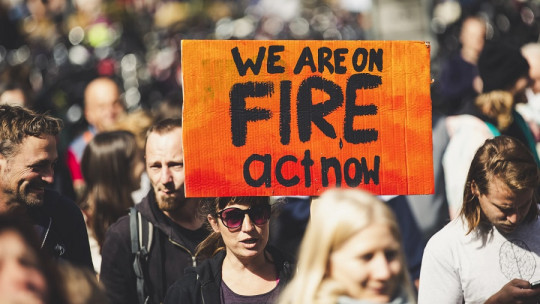Sometimes it is the way we relate to others, and not so much our way of thinking, that defines in a more special way who we are and how we act.
We can explain our motivations, our goals and part of our problems and concerns by looking at how our personality is expressed when we are accompanied by more people.
And, on those occasions in which the social aspect is added to the emotional aspect, it is much more likely that we approach a deeper and more complex description of our personality (or the personality of others). So if part of our way of being is expressed through the way we behave when we are in a relationship, The same thing happens in its absence, and more specifically when we are single
What types of singleness exist?
Next You can see a proposal of what a classification system for the main types of singleness could be like
It is not an exhaustive classification, and therefore the same person may present some characteristics of more than one of these types, but it is a first step that can help explain people’s traits, propensities and possible problems.
1. Independent Singles
This type of singleness is promoted by an assessment of the costs and benefits of having a partner
Singles of this type tend to highly value the option of living their own life without ties and with a lot of time available for themselves, without having to give up time and space to another person. In other words, they are wary of commitments that are too strong and intense.
2. Self-sufficient singles
Single people who belong to this category do not even consider the costs and benefits of having a partner, because Their lifestyles inherently entail a high degree of isolation and self-sufficiency
In this mode of singleness, the default state is loneliness, although a loneliness that does not have to be perceived as something negative, since it is interpreted as the normal state of things. Therefore, it is likely that these people will remain single for a long time, firstly because of their solitary habits and secondly because of their lack of interest in increasing their chances of interacting more with other people.
3. Isolated singles
Isolated single men and women show many characteristics that define self-sufficient people, but with the difference that They do perceive their singleness as a problem and therefore they would prefer to break with their isolation dynamic.
However, the very fact of being accustomed to a solitary way of life makes it difficult for them to learn other habits that expose them more to relationships with others, and it is also possible that due to their lack of habit it is difficult for them to learn some useful social skills. to form and maintain ties.
4. Low self-esteem
These people want to form a relationship, but they believe that they cannot, not because of their habits or customs, but because they believe that they, due to their own way of being, are not worth enough to have those opportunities. That is, regardless of what they may learn or the way in which they may change, they believe they will never evolve enough to be attractive
Of course, there are no objective criteria to determine the value that people have, and therefore these types of thoughts are deeply irrational, but that does not change the fact that they tend to be very persistent and affect many aspects of quality. of one’s life. Therefore, this type of singleness is one of the symptoms of a broader problem that, in any case, can most likely be corrected by working to improve self-esteem.
5. Existential singles
Singles belonging to this group are characterized by a certain existential pessimism which means they don’t believe that relationships mean anything in and of themselves.
Therefore, they see in a cold and dispassionate way the option of having intimate emotional relationships with someone, and although at times they may enjoy relationships, they will be aware that the pleasure they find in those moments is built by them with their own way of taking the relationship, and it is not given to them by the other person.

6. Ideological singles
This type of singleness is less common, and is mainly explained by an ideology that makes the person impose red lines when it comes to meeting people , or who systematically rejects potential partners or people they consider attractive. This way of thinking is not so much related to one’s own self-esteem as it is to the way in which reality and the functioning of society are interpreted. For example, people who profess certain religions very intensely may be very demanding with the timing of falling in love, or may prohibit themselves from having a partner.
This type of singleness can cause problems when both the ideological pressure and the desire to have a partner are very strong and produce a lot of pressure and anxiety.
7. Transitional singles
These people believe that their chances of being in a short or medium-term relationship are relatively high , and therefore they are almost always examining the people around them to actively decide which ones are a better option. Therefore, they interpret the state of singleness as a transition from one relationship to another.
8. Singles by learning
Those who are single by learning are those who flee from the idea of having a partner due to bad past experiences
This category could encompass both people who have developed a more or less elaborate discourse about why a partner is not suitable for them, to those who, due to traumatic memories, feel a strong irrational rejection that is difficult to explain at the idea of being in a relationship. relationship of this type. Sometimes, this aversion to finding a romantic partner is called philophobia.
Having a romantic partner should not be an obligation
Our cultural legacy pushes us to pair up and get married. It is necessary to get rid of this idea and build our lives based on personal values and our own criteria. Over the last decade, new ways of loving (such as polyamory) have begun to gain prominence.
Of course, it is not necessary to live as a couple to be happy. Each individual must find their place in the world, their circle of friends and relationships, freely. Perhaps in this way we can reinterpret the concept of singleness so often associated with loneliness and isolation.









